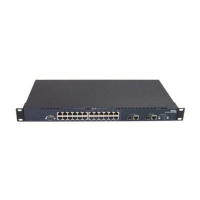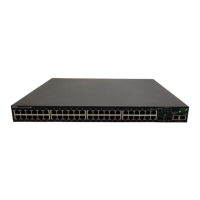BigIron RX Series Configuration Guide 1097
53-1002253-01
Configuring IPv6 neighbor discovery
43
• Link-local address.
• Assigned unicast address.
• Loopback address.
• All-nodes multicast address.
• Solicited-node multicast address.
• Multicast address to all other groups to which it belongs.
You can adjust the following IPv6 neighbor discovery features:
• Neighbor solicitation messages for duplicate address detection.
• Router advertisement messages:
• Interval between router advertisement messages.
• Value that indicates a router is advertised as a default router (for use by all nodes on a
given link).
• Prefixes advertised in router advertisement messages.
• Flags for host stateful autoconfiguration.
• Amount of time during which an IPv6 node considers a remote node reachable (for use by all
nodes on a given link).
Neighbor solicitation and advertisement messages
Neighbor solicitation and advertisement messages enable a node to determine the link-layer
address of another node (neighbor) on the same link. (This function is similar to the function
provided by the Address Resolution Protocol [ARP] in IPv4.) For example, node 1 on a link wants to
determine the link-layer address of node 2 on the same link. To do so, node 1, the source node,
multicasts a neighbor solicitation message. The neighbor solicitation message, which has a value
of 135 in the Type field of the ICMP packet header, contains the following information:
• Source address - IPv6 address of node 1 interface that sends the message.
• Destination address - solicited-node multicast address (FF02:0:0:0:0:1:FF00::/104) that
corresponds the IPv6 address of node 2.
• Link-layer address of node 1.
• A query for the link-layer address of node 2.
After receiving the neighbor solicitation message from node 1, node 2 replies by sending a
neighbor advertisement message, which has a value of 136 in the Type field of the ICMP packet
header. The neighbor solicitation message contains the following information:
• Source address - IPv6 address of the node 2 interface that sends the message.
• Destination address - IPv6 address of node 1.
• Link-layer address of node 2.
After node 1 receives the neighbor advertisement message from node 2, nodes 1 and 2 can now
exchange packets on the link.
After the link-layer address of node 2 is determined, node 1 can send neighbor solicitation
messages to node 2 to verify that it is reachable. Also, nodes 1, 2, or any other node on the same
link can send a neighbor advertisement message to the all-nodes multicast address (FF02::1) if
there is a change in their link-layer address.

